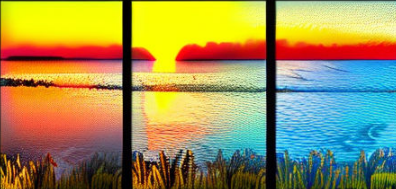Using Color Palettes to Create Aesthetic Visuals

As humans, we are naturally drawn to aesthetically pleasing visuals. We tend to notice the beauty when an image is composed of carefully chosen colors that work together harmoniously, creating a vibrant and eye-catching composition. This phenomenon can be explained by color theory, which states that certain combinations of colors have the ability to evoke different emotions in people. But what exactly is a color palette and how does it help us create these stunning visuals?


In addition to being used for aesthetic purposes, color palettes are also used in branding and advertising campaigns. Companies often use specific color palettes in order to create an identity for their brand or product. For example, Coca-Cola’s iconic red and white logo is instantly recognizable due to its simple yet effective color palette. By using this particular combination of colors, they have created an easily recognizable brand identity that resonates with their target audience.

In conclusion, it is clear that color palettes are essential for creating aesthetically pleasing visuals as well as conveying complex messages without the use of words alone. With the right combination of hues, tints, shades and shadows, almost any message can be communicated effectively through visual art forms such as photography or painting.
Summary: Color palettes are an essential tool for creating aesthetically pleasing visuals as well as conveying complex messages without words alone. This article explored the use of color palettes in detail with a mix of metaphors and literal scientific explanations, providing insight into how they can be used effectively for both aesthetic purposes and branding campaigns alike.

Tags: Color Palette; Color Theory; Aesthetic Visuals; Branding; Advertising; Emotions; Hues; Tints; Shades; Shadows; Contrast; Complementary Colors; Analogous Colors